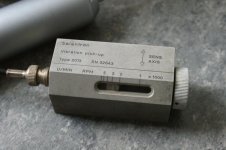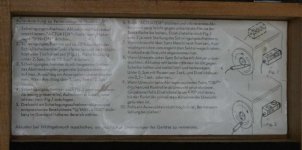Obviously people balance wheels for a reason, but I don't fully understand why it works.
It seems to me that if you have an out of balance wheel, it makes the spindle and wheel wobble. Ok, so you dress the wheel while it's spinning, and any wobble is removed. It might still be out of balance, but you dynamically shaped the wheel to run true. So why does it still affect finish?
I initially,when I started down the
T+C Grinder balancing path, I was thinking the same thoughts. But, I think the answer lies in the somewhat more complex vibrations induced in the system than just a very
simple and consistently reproduced bouncing of the wheel/spindle. There is, of course, the primary vibration frequency of the system that should be roughly equivalent to the RPM of the wheel. But in addition to that are the harmonics induced in the system much like a single pluck of a guitar string (or in this case revolution) causes harmonic vibrations as well as the primary vibration. That would be bad enough, but another problem is that the RPMs vary significantly with load on the wheel and motor. So if you dress under practically no load, and then start to grind, the RPMs change so the wheel is deflecting in a different pattern than it did when dressed and so what was the high spot on the wheel at the no-load RPM is no longer the high spot at a different RPM and all those small harmonic deflections are also no longer the same as they were.
If you wanted to be a super-purist, you have to balance the wheel initially in its highly unbalanced state, dress causing it to somewhat unbalanced again, re-balance and re-true. I think I actually did that without being conscious of it as I did balance, trued and then retested, balanced, and re-trued. I suppose,
if you were attempting a very extreme and rather impractical degree of balance, you could go through many such iterations. (I can't wait to be flamed for discussing multiple iterations---don't bother)
Anyway, I know balancing works on my T+C grinder and I know it makes a very significant difference in surface finish on that machine. I
think this RPM and harmonics issue is the reason you can't just dress the wheel true in a springy setup like a T+C grinder. In the case of the surface grinder, the machine is so relatively rigid and relatively massive that a simple dress on a wheel mounted in a non-balancing spindle gives very good results as it does on smaller machines like my Harig. I do not doubt that balancing smaller SG wheels might be helpful (at least one member reports balancing to cause improvement) and I believe it is common practice on larger machines with more massive wheels.
I'd be interested to hear other thoughts on this particularly if someone has actually used a strobe and/or other measuring equipment to see what is going on.
Denis




